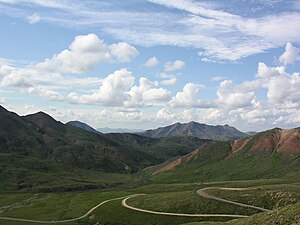 |
| Image via Wikipedia |
Commission business will include an update the Nabesna Off-Road Vehicle Management Plan/Environmental Impact Statement, an opportunity to comment on an Environmental Assessment on the Subsistence Collections and Uses of Shed or Discarded Animal Parts and Plants from NPS Areas in Alaska, and an opportunity to develop proposals to change federal subsistence fisheries regulations.The meeting is open to the public, and public testimony opportunities are provided. Written comments may also be submitted through the park subsistence coordinator by February22nd for presentation at the meeting.
The meeting will begin in Slana at 9:30 AM on Monday, February 27, and will recess for the day at 5 PM. There may be an evening session at the call of the chair. On Tuesday, February 28, the meeting will reconvene in Copper Center at 9 AM and adjourn when business is completed. If the commission business is completed on Monday, the SRC will adjourn and not meet on Tuesday.
Please click Here for a draft agenda.
Additional information may be obtained by calling Barbara Cellarius, subsistence coordinator for Wrangell-St. Elias National Park and Preserve, at 822-7236.










